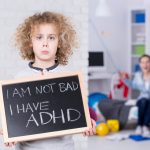Xenoestrogens—The Assault on Reproductive Health
Eric Yarnell, ND, RH(AHG)
Synthetic compounds structurally distinct from estrogen that nevertheless act as estrogen receptor agonists are known as xenoestrogens. The list of xenoestrogenic compounds that industry has polluted the globe with is long and growing—dioxins, phthalides, polychlorinated biphenyls (PCB), DDT, organochlorines, bisphenol A, and so on. The worsening estrogenic soup we appear to be bathing ourselves and our environment in will inevitably have negative adverse effects. Most prominent among these is a decline in male fertility.
As has been noted in editorials in the mainstream medical press, the male partner as the cause of infertility in couples has grown from 10% to 25% in the past few years (Lancet, 1995). This is most likely related to the decline in sperm quality detected in a meta-analysis of over 60 studies on the question (Carlsen et al., 1992).
The Scope of the Problem
The reality is we don’t even know whether most chemicals are xenoestrogens or not. Manufacturers are not required to test for this when they develop new chemicals. It has also been suggested that minute quantities of xenoestrogens that appear harmless could act additively or even synergistically to create problems (Soto et al., 1997). Many xenoestrogens are lipid soluble, and thus may reside in the fatty tissues of the body for years or even decades, potentially causing long-lasting problems. This means that even when seriously hazardous chemicals such as PCBs are banned (as occurred in 1977 in the United States), they will remain a threat for a long time to come.
It is interesting to note that while Denmark, Sweden, and Norway have clearly seen reduced sperm counts and fertility, neighboring Finland has not. The leading explanation for this is that Finland industrialized much later than its Scandinavian neighbors and thus there has been less exposure to xenoestrogens and other toxins. Finland has been rapidly industrializing, however, and problems are now starting to crop up.
Negative Effects of Xenoestrogens
Xenoestrogens cause problems by excessively stimulating the estrogen receptor. But this is not the only issue (Roy et al., 1997). Many of these compounds are also teratogenic or carcinogenic. They can cause ripple effects on other hormones in response to the perceived estrogen dominance. Many xenoestrogens are also antiandrogens. Detailed molecular studies continue showing that xenoestrogens can cause a myriad of damaging effects on tissues all over the body.
Though male infertility is a fairly well-documented outcome of high xenoestrogen exposure, many other disease states are now being associated with exposure to these chemicals. Hypospadias, cryptorchidism, and testicular cancer have all been increasing in incidence at an alarming rate, and all are strongly associated with xenoestrogen exposure (Jensen et al., 1995). Evidence is also mounting that xenoestrogens and estrogens are strongly related to induction or aggravation of benign prostatic hyperplasia and prostate cancer (Matsuda et al., 2004; Wetherill et al., 2005). Women are not safe either. Breast cancer and endometriosis show correlations with xenoestrogen exposure (Louis et al., 2005).
Countering Xenoestrogens
The most important step we can take to help our patients with xenoestrogen-related conditions is to reduce their exposure, both on an individual basis and by supporting political work to eliminate or restrict these chemicals from being produced and released. Patients should eat only organic food and avoid plastic as carefully as possible. Plastic should never be heated, certainly not for prolonged periods, as this accelerates release of its xenoestrogenic molecules directly into food.
Phytoestrogens are very likely counteract the negative effects of xenoestrogens by acting as functional estrogen receptor antagonists, in addition to their antineoplastic and other beneficial effects. It is important not to overdose on phytoestrogens, however, for even these usually safe compounds can, in excess, have estrogenic effects. Reasonable portions of a wide diversity of legumes are a healthy part of the diet for most people.
Detoxification to remove lipophilic xenoestrogens from the body is not well studied. However, other lipophilic chemicals of concern can be safely and reliably removed by various hydrotherapy techniques including saunas and colonics coupled with high doses of antioxidants, healthy diet as described above, and sometimes more aggressive measures that are beyond the scope of this article.
Now that awareness is high about the dangers of xenoestrogens, there can no longer be any excuse for not acting against them clinically or politically. Recognition of the role of these compounds in particular diseases can help improve treatment. But ultimately it will be the effects of many people crying out against the pollution with these and so many other toxic chemicals that will be the solution to the problem.
Phytoestrogens Are Not Xenoestrogens
Naturally occurring phytoestrogens, found throughout the Fabaceae family in particular, have long been part of the human diet. Though some researchers have lumped them together with xenoestrogens, there are many reasons to think they are not similar.
- We are evolved to cope with phytoestrogens because of exposure to them at low levels in the diet for millions of years. Xenoestrogens have existed less than 50 years.
- Phytoestrogens are relatively rapidly metabolized and excreted completely from the body compared with xenoestrogens.
- Peoples with very high phytoestrogen levels in their diet have lower levels of diseases associated with xenoestrogens (e.g., traditional Asian diets, traditional South American diets).
- Most phytoestrogens circulate bound to proteins in the blood, compared with free xenoestrogens.
- Patients with xenoestrogen-related conditions improve when they are treated with a diet containing more phytoestrogens.
References
Carlsen B et al: Evidence for decreasing quality of sperm during the past 50 years, BMJ 305:609-13, 1992.
Jensen TK et al: Do environmental estrogens contribute to the decline in male reproductive health? Clin Chem 41:1896-901, 1995.
Lancet: Male reproductive health and environmental oestrogens, Lancet 345:933-5, 1995.
Louis BM et al: Environmental PCB exposure and risk of endometriosis, Hum Reprod 20:279-85, 2005.
Matsuda T et al: Relation between benign prostatic hyperplasia and obesity and estrogen, Rinsho Byori 52:291-4, 2004. [in Japanese]
Roy D et al: Biochemical and molecular changes at the cellular level in response to exposure to environmental estrogen-like chemicals, J Toxicol Environ Health 50:1-29, 1997.
Soto AM et al: Developing a marker of exposure to xenoestrogen mixtures in human serum, Environ Health Perspect 105(suppl 3):647-54, 1997.
Wetherill YB et al: Xenoestrogen action in prostate cancer: pleiotropic effects dependent on androgen receptor status, Cancer Res 65:54-65, 2005.
 Eric Yarnell, ND, RH(AHG), is a graduate of Bastyr University. He completed a two-year residency with Silena Heron, ND, and served as chair of botanical medicine at the Southwest College of Naturopathic Medicine. He is past senior editor of the Journal of Naturopathic Medicine. Dr. Yarnell is a founding member and current president of the Botanical Medicine Academy and author of numerous textbooks and articles including Naturopathic Urology and Men’s Health, Naturopathic Gastroenterology, and Clinical Botanical Medicine. His area of clinical focus is urology and men’s health. He is assistant professor in botanical medicine at Bastyr University.
Eric Yarnell, ND, RH(AHG), is a graduate of Bastyr University. He completed a two-year residency with Silena Heron, ND, and served as chair of botanical medicine at the Southwest College of Naturopathic Medicine. He is past senior editor of the Journal of Naturopathic Medicine. Dr. Yarnell is a founding member and current president of the Botanical Medicine Academy and author of numerous textbooks and articles including Naturopathic Urology and Men’s Health, Naturopathic Gastroenterology, and Clinical Botanical Medicine. His area of clinical focus is urology and men’s health. He is assistant professor in botanical medicine at Bastyr University.










